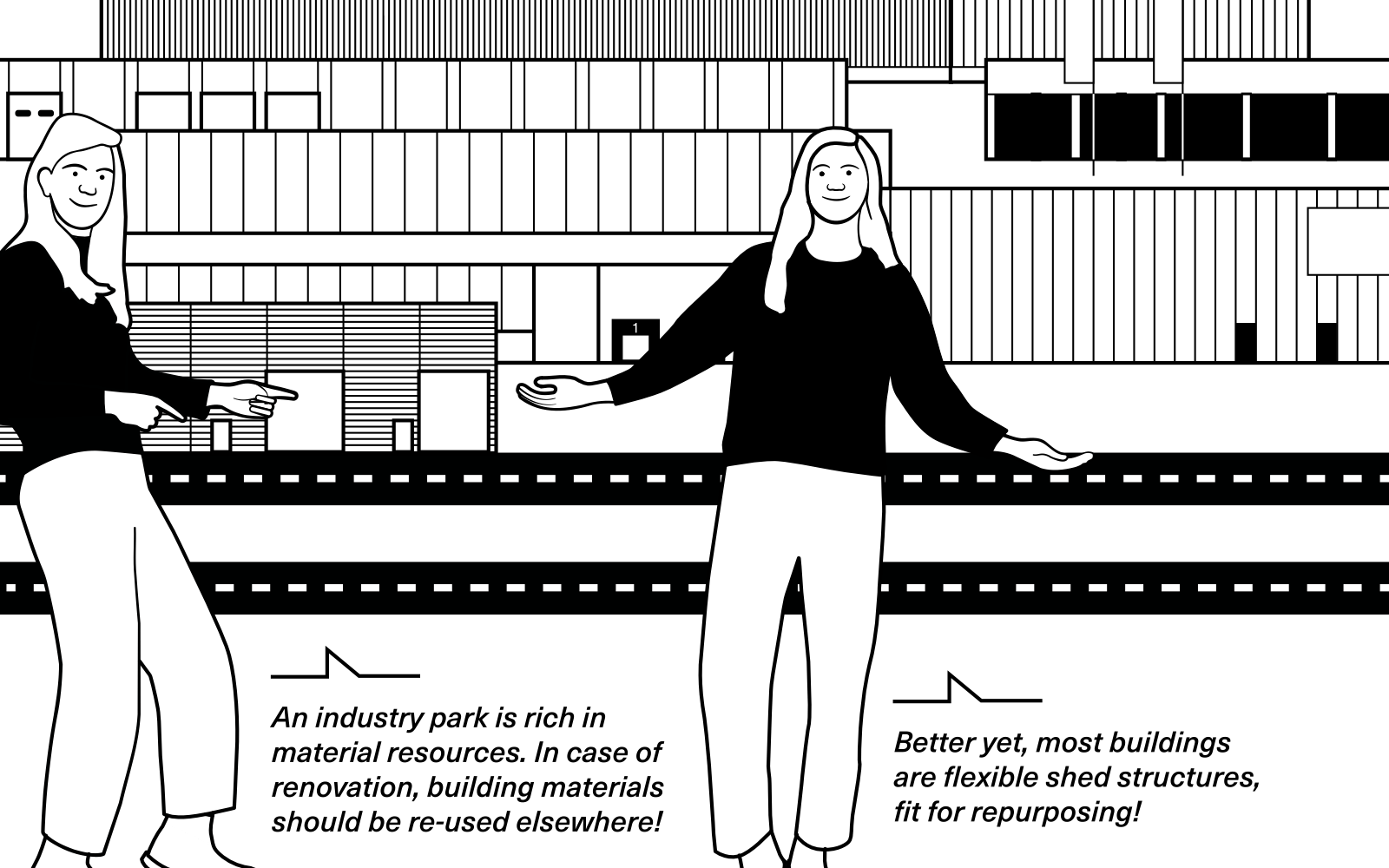A Comics-Based Approach
Downloads
DOI:
https://doi.org/10.47982/spool.2023.1.05Keywords:
circularity of the built environment, comics, critical exploration, complexity, socio-spatial researchAbstract
Comics are a known method to visually link characters to context through time. This article explores the medium of comics to untangle stakeholder dynamics in the context of a complex theme such as circularity of the built environment.
Circularity of the built environment tailors concepts of circular economy to the field of construction and urban development. Relying mostly on optimization strategies, context-specific characteristics such as stakeholder agency and spatial preconditions are often disregarded as resources in the design of circularity projects. This results in one-size-fits all circularity instruments formalized in generic toolboxes.
Circularity instruments should additionally engage with stakeholders, recognizing complexity and surfacing the resourcefulness of the territory. This comics series follows the researcher from analysis to design hypothesis, clarifying complexity at hand from the researcher perspective, including stakeholder agendas, spatial conditions, barriers and opportunities.
Part of an ongoing action-research project, the self-reflective comics show parts of a researcher’s journey untangling circularity in the built environment in its multiple stakeholder dimensions. It includes data sourced from mixed method research, such as ethnographic fieldwork, semi-structured interviews, and archival research on two Flemish industry parks, Kortrijk-Noord and Leuven-Haasrode.
These comics function as a narrative assemblage method for critical analysis, bringing together different data sources, and rendering our research process on circularity contextual and visual. Additionally, the comic allows us to communicate, challenge, and begin to design with (hidden) stakeholder agency.
How to Cite
Published
Versions
- 2025-11-02 (2)
- 2023-12-24 (1)
License
Copyright (c) 2023 Ellen Verbiest, Julie Marin, Bruno De Meulder, Andrew Vande Moere

This work is licensed under a Creative Commons Attribution 4.0 International License.

References
Barberis, E., & Grüning, B. (2021). Doing Social Sciences Via Comics and Graphic Novels. An Introduction. Sociologica, 15(1), 125–142. https://doi.org/10.6092/issn.1971-8853/12773
Calisto Friant, M., Vermeulen, W. J. V., & Salomone, R. (2020). A typology of circular economy discourses: Navigating the diverse visions of a contested paradigm. Resources, Conservation and Recycling, 161, 104917.
Campbell-Johnston, K., Cate, J. T., Elfering-Petrovic, M., & Gupta, J. (2019). City level circular transitions: Barriers and limits in Amsterdam, Utrecht and The Hague. Journal of Cleaner Production, 235, 1232-1239.
Cancellieri, A., & Peterle, G. (2021). Urban Research in Comics Form: Exploring Spaces, Agency, and Narrative Maps in Italian Marginalized Neighborhoods. Sociologica, 15(1), 211–239. https://doi.org/10.6092/issn.1971-8853/12776
Dittmer, J. (2010). Comic book visualities: A methodological manifesto on geography, montage, and narration. Transactions of the Institute of British Geographers, 33(4), 437-503.
Fraser, B. (2019). Visible cities, global comics: Urban images and spatial form. University Press of Mississippi.
Groensteen, T. (2007). The system of comics. University of Mississippi.
Karasti, H., Botero, A., Saad-Sulonen, J., & Baker, K. S. (2021). Configuring Devices for Phenomena in-the-Making. Science & Technology Studies.
Law, J. (2004). After Method, mess in social science research. Routledge.
Marin, J., & De Meulder, B. (2018). Interpreting Circularity. Circular City Representations Concealing Transition Drivers. Sustainability, 10, 1310.
Marin, J., & De Meulder, B. (2021). Time is life. Ruimte. Antwerpen: vrp.
Peterle, G. (2021). Comics as a Research Practice: Drawing Narrative Geographies Beyond the Frame (1st ed.). Routledge.
Prieto-Sandoval, V., Jaca, C., & Ormazabal, M. (2018). Towards a consensus on the circular economy. Journal of Cleaner Production, 179, 605-615.
Squarzoni, P. (2014). Climate Changed: A Personal Journey through the Science. Harry N. Abram.
Schröder, P., Lemille, A., & Desmond, P. (2020). Making the circular economy work for human development. Resources, Conservation and Recycling, 156, 104686.
Urbinati, A., Chiaroni, D., & Chiesa, V. (2017). Towards a new taxonomy of circular economy business models. Journal of Cleaner Production, 168, 487-498.
Verga, G. C. K. A. Z. (2022). Space Matters: Barriers and Enablers for Embedding Urban Circularity Practices in the Brussels Capital Region. Frontiers in Built Environment, 8.



